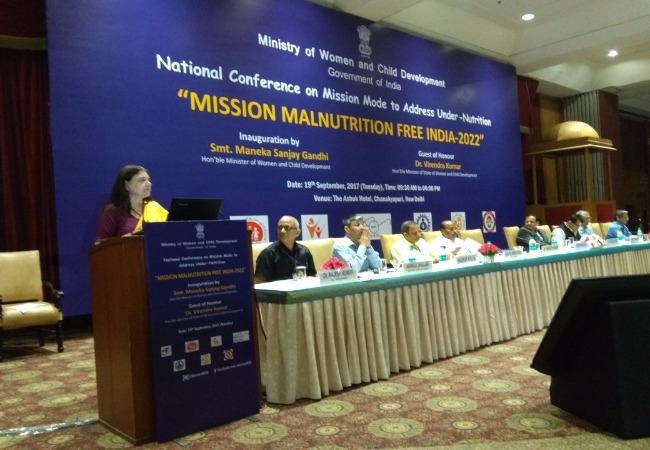WCD's Conference held to make India Malnutrition Free by 2022
Total Views |
New Delhi, September 19: The first ever National Conference on Under-Nutrition in the country by Women and Child Development (WCD) Ministry held on Tuesday in New Delhi. The main aim of this conference is to make India Malnutrition Free by 2022.

The WCD Secretary, Rakesh Srivastava said that in collaboration with Drinking water & Sanitation Ministry and Health & Family Ministry, the WCD has organized this conference.
The Government has decided to lay focused attention on this issue and for this said purpose, Ministry of Women and Child Development has identified 113 districts across the States/UTs based on the composite index of NITI Aayog and prevalence of stunting from NFHS-4 data. At least one district has been selected from each State/UTs so that the action taken in the selected district can be emulated in the other districts also added Srivastava.
Three States has been awarded at Tuesday’s conference. These three states have been awarded for showing good progress in the area of reduction in stunting as measured by National Family Health Survey (NHFS). These States are Chattisgarh, Arunachal Pradesh and Gujarat which are measured between NFHS-3 and NFHS-4.
Joint Secretary WCD, Dr Rajesh Kumar said that several important steps have already been taken by the WCD Ministry recently for a multipronged strategy to manage malnutrition. This includes training ICDS functionaries, developing a curriculum for ECCE, food fortification guidelines among others. He further stated that the WCD Ministry has developed a world-class software ‘ICDS-CAS’ for real-time monitoring of nutrition-related parameters in 8 States.
According to UNICEF, India’s annual economic growth is 10%, but the rate of child undernutrition is very high. The NFHS-3 report says that 48% of children under the age of five are stunted due to chronic undernutrition, with 70 percent being anaemic. The nutrition situation of children is largely due to the situation of women. NFHS-3 indicates that 36 percent of Indian women are chronically undernourished and 55 percent are anaemic. Recent data from Bihar and Madhya Pradesh shows that girls represent up to 68 percent of the children admitted to programmes for the severely malnourished.
Some countries have addressed their nutrition challenge successfully. Between 1990 and 2002, China reduced child undernutrition by more than half (from 25% to 8%); Brazil reduced child undernutrition by 60 percent (from 18% to 7%) from 1975 to 1989; and Vietnam reduced child undernutrition by 40 percent (from 45% to 27%) between 1990 and 2006.